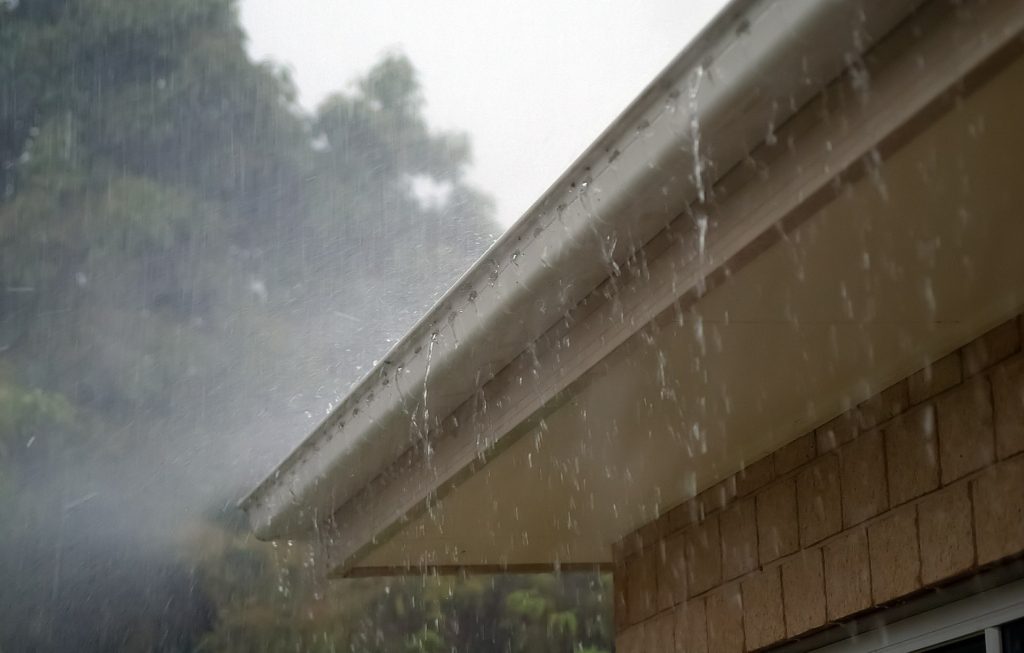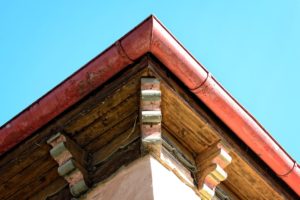Most Durable, Design-Friendly, and Cost-Effective Gutter Materials
Rain gutters do more for a home than just keep the people below from getting wet. Well-designed gutters help channel water away from a home and keep the foundation dry, ultimately reducing the risk of a flooded basement or damaged siding. Rain gutters may seem simple and straightforward, but they come in many different designs and materials. So when it comes time to replace your old gutters or install new ones, here’s what you need to know about gutters.
Do I Need Gutters?
The short answer, likely yes. There are very few instances where a home does not need some type of gutter system, but where is what needs to be considered when deciding:
- Does your roof have an overhang? If there is little to no overhang from your roof, water will run off your roof and accumulate around your home’s foundation. In this situation, you most definitely need gutters.
- Is your house higher than the surrounding landscaping? If your home is slightly lower than the surrounding landscaping of your home, gutters will be required to channel the water away from your home.
- Is your home surrounded by concrete? If your home is surrounded by concrete, the foundation is likely protected, but the concrete will erode over time. In this situation, you should consider installing gutters.

3 Styles of Rain Gutters
Half-Round Gutters
Half-round gutters are shaped like a tube cut in half and are very efficient at carrying water. These are fully open gutters that create a trough for everything that runs down your roof. This makes them prone to clogging with debris and leaves if you have trees nearby. In instances with nearby trees, it is a best practice to install leaf guards to prevent gutter clogs.
This style of gutter was particularly favored before the 1960s, so there is a chance you have these on your home if it is older. This style does require the use of brackets to mount the gutter to the fascia boards because they do not sit flush.
K-Style Rain Gutters
When looking at these gutters from the side, they appear to be shaped like the letter K. This style of gutter has been the most common for the last few decades. The solid back of the K-frame allows for the gutters to be directly screwed into the fascia board. A major selling point to this style of gutter is its resemblance to crown molding. It offers a higher level of decoration than the older half-round gutters.
As for water flow, K-Style gutters better hold water than traditional rounded gutters. The flat, straight bottoms with outwardly angled sides carry more water away from the home allowing minimal overflow. One downside of K-style rain gutters is that they are harder to clean due to the inside angles holding more debris. Once again, gutter guards should be installed when necessary.
Custom-Built Fascia Gutters
Fascia gutters are custom built for the home where they are being installed. Half-round and k-style gutters need to be assembled and pieced together, which makes them prone to rust and leak. Fascia gutters are more expensive and need to be installed by a professional.

Common Rain Gutter Materials
Aluminum Gutters
Aluminum is the most popular material for rain gutters and comes in several thicknesses. The thicker the aluminum, the more durable the gutter.
Pros:
- Easy to install
- Lightweight
- Rust resistant
- Available in many colors
- Weatherproof
- Longevity
Cons:
- Easily bent or dented
Vinyl Gutters
Vinyl gutters come in a variety of colors and can be painted to fit your home. It is the least durable gutter material and is prone to weathering.
Pros:
- Lightweight
- Can be painted
- Will not corrode
- Rust resistant
- Inexpensive
- Easy installation
Cons:
- Becomes fragile under high heat
- Cracks under hard freezes
- Color fades with sun exposure
- Cannot hold much weight
Zinc Gutters
Zinc rain gutters are highly durable, but it comes at a high price. These gutters are resistant to corrosion, weathering, and warping. Expect up to 50 years with these gutters.
Pros:
- Longevity
- Rust resistant
- Warp resistant
- Fade-resistant
Cons:
- Expensive
- Difficult to install
- Intolerant to acidic runoff from cedar-shingled roofs
Steel Gutters
Steel gutters are more durable than aluminum but less durable than zinc. Most steel rain gutters are galvanized to delay rust, but rusting is inevitable as the gutter ages.
Pros:
- Very strong
- Great for all types of weather
- Can be painted
Cons:
- Prone to rust
- Difficult to install
- Heavy



